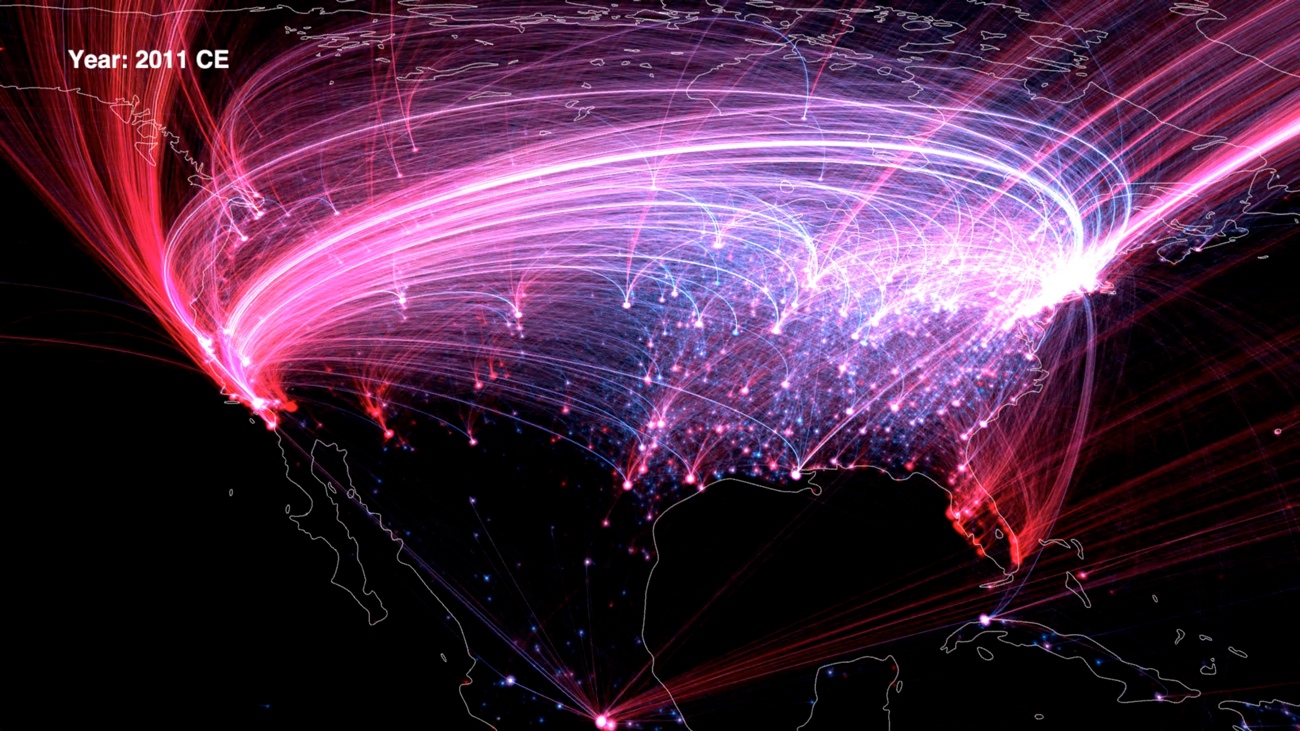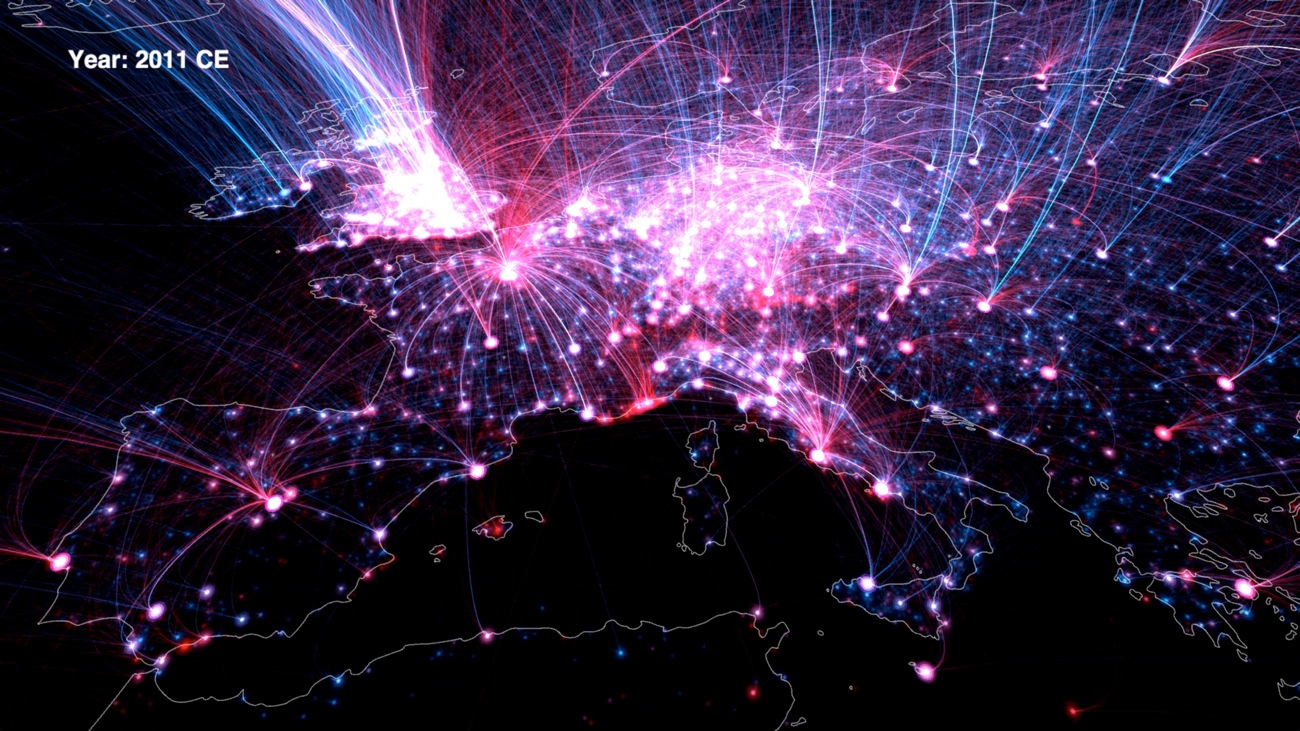See Which Cities Attract the World's Greatest Minds

Want to become someone of note? Be born in Boston and move to New York City.
Granted, it might help to have some sort of talent, too. But Boston is the birthplace of brilliant people, while New York attracts them later in life, according to a new study of how people migrate.
Using a database of more than 2,000 years of notable names, stretching back to King David of Israel and Judah in 1069 B.C., researchers tracked the rise and fall of cultural centers in Europe and North America over hundreds of years. They found that Paris was a magnet for talent, drawing 70 percent of France's notables over the centuries, and that Germany has long consisted of multiple, smaller, cultural centers competing for brains and creativity.
The mapping method even allows researchers to link locations with particular professions by studying who dies where. [Video: See 2,000 Years of European and American Hotspots]
"This paper is the first step," study researcher Maximilian Schich, an art historian at the University of Texas at Dallas, told Live Science. "In follow-up papers, we can actually show even more that actors die in Hollywood and sports people die in Cleveland and sailors die at sea."
Tracking notable names
Schich and his colleagues are interested in bringing science to the humanities as a way to understand how complex works arise. In previous research, scientists have looked at the evolution of cities over time, but usually by aggregating large geographical regions together, Schich said.
Sign up for the Live Science daily newsletter now
Get the world’s most fascinating discoveries delivered straight to your inbox.
"In this study, for the first time, we actually look at the fluctuations at the level of individual cities," he said.
Using a database of 150,000 notable names from the site Freebase.com, Schich and his colleagues recorded the birth and death locations of each person. "Notables" ranged from famous monarchs such as King David to short-term celebrities. The most recent notable name on the list, dating to 2012, was Poppy Barlow, the stillborn daughter of singer Gary Barlow and dancer Dawn Barlow. [10 Celebrities With Chronic Illnesses]

Using the birth and death locations, the researchers created maps of where famous people are born and where they die — usually indicating the location they'd chosen to live, though not always: Concentration camps, battlefields and the sites of major plane crashes show up on the maps as temporary blips in the death data.
Rise and fall
Between A.D. 1 and 2012, the maps reveal the changing character of Europe. At first, Rome was a hub. Gradually, cities began to connect to one another, as well, with flows of people moving from point to point. Around the 1500s, regional clusters began to emerge, in two different patterns. Some areas were dominated by a single central city, such as Paris. Others had scattered, smaller cultural centers, none reigning supreme. Germany was an example of the latter, Schich said. No city in Germany ever took in more than 20 percent of notable movers and shakers from the country.
"The places which are attractors are very good predictors of where it is awesome to hang out," Schich said. "You find beautiful coastlines. You find beautiful places at the mountainside."
London, the Alps and the French Riviera were among the European places that notables migrate, the researchers found. Birthplaces of notables were rural areas and cities such as Edinburgh and Dublin, which exported more great minds than they imported.
In the United States, New York City now dominates as a magnet for famous names. Boston, Philadelphia, Chicago, New Orleans and the rural Midwest act as incubators where notables are born and then move elsewhere. Other attractive cities that famous people flock to beyond New York include Los Angeles and Washington, D.C., while Dallas, Nashville and Atlanta also attract more notables than they export.
"There are a lot of notable individuals being born all over the western half of the U.S., but most of them actually move to cultural centers of various sizes," Schich said. Boston likely produces more notables than it attracts, because the city's educational institutions attract young people who start families there. Those families — including to-be-famous children — later move, Schich said.
The patterns change with time. New York wasn't always an attractor of great names, for example. In the 1920s, Schich said, the city birthed more notable people who later moved than it attracted.
"The invention of the affordable car led to a mass exodus to L.A.," Schich said.
The researchers reported their findings today (July 31) in the journal Science.
Follow Stephanie Pappas on Twitter and Google+. Follow us @livescience, Facebook & Google+. Original article on Live Science.

Stephanie Pappas is a contributing writer for Live Science, covering topics ranging from geoscience to archaeology to the human brain and behavior. She was previously a senior writer for Live Science but is now a freelancer based in Denver, Colorado, and regularly contributes to Scientific American and The Monitor, the monthly magazine of the American Psychological Association. Stephanie received a bachelor's degree in psychology from the University of South Carolina and a graduate certificate in science communication from the University of California, Santa Cruz.
Why is yawning contagious?
Scientific consensus shows race is a human invention, not biological reality










